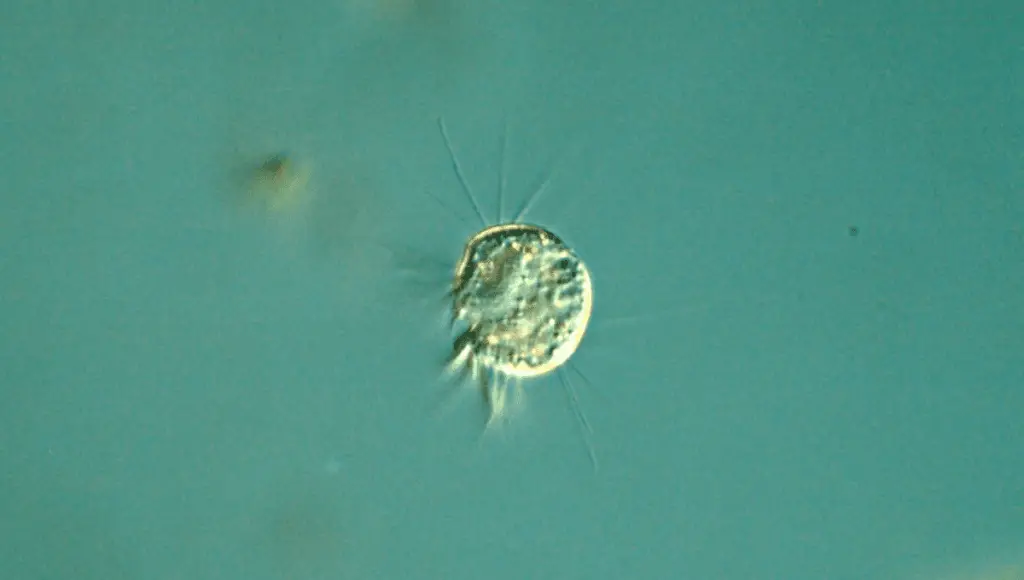Question: Identify the components of the enveloped virus budding process.
Answer:
- Viral capsid: The protein coat that encloses the viral genetic material.
- Viral glycoproteins: Proteins present on the surface of the viral envelope that facilitate attachment and entry into host cells.
- Budding of enveloped virus: The process by which an enveloped virus acquires its lipid envelope from the host cell membrane during viral release
- The cytoplasmic membrane of the host: The host cell membrane that becomes part of the viral envelope during the budding process
- Enveloped virion: The fully formed viral particle with a lipid envelope surrounding the viral capsid.

Photo credit: Biomaterial publishing
Question: Identify each step in the bacteriophage replication cycle.
Answer: The steps in the bacteriophage replication cycle are as follows:
- Attachment: The bacteriophage attaches to the surface of the host bacterium.
- Entry: The viral genetic material (DNA or RNA) is injected into the host cell.
- Bacterial chromosome degraded: The bacteriophage enzymes degrade the bacterial DNA to prevent interference with viral replication.
- Synthesis: The viral genetic material is replicated, and viral components are synthesized within the host cell.
- Assembly: Newly synthesized viral components assemble to form complete viral particles.
- Release: The host cell is lysed (bursts open), and the new bacteriophages are released to infect other bacterial cells.
Question: Contact between a phage and its bacterial host occurs by _____.
Answer: Contact between a phage and its bacterial host occurs by “a random collision.” Bacteriophages do not have a specific targeting mechanism for their hosts. They encounter and infect bacterial cells through random encounters facilitated by diffusion and movement.
Question: What portion of bacteriophage T4 enters E. coli?
Answer: “Only the T4 genome enters the bacterial cell.” During infection, the bacteriophage T4 attaches to the surface of the E. coli cell, and its genetic material (genome) is injected into the host cell. The rest of the phage remains outside the cell.
Question: Once entry into the bacterial cell has been achieved, the next step in a lytic replication cycle is _____.
Answer: The next step in a lytic replication cycle is “synthesis.” After the viral genome enters the bacterial cell, the phage takes control of the host cell’s machinery to replicate its own genetic material and produce viral components.
Question: During a lytic replication cycle, what action does a phage take to ensure that its host bacterium does NOT continue synthesizing cellular molecules?
Answer: “Phage enzymes degrade the bacterial DNA.” During the lytic replication cycle, the bacteriophage releases specific enzymes that degrade the bacterial DNA. This prevents the host cell from continuing its normal cellular functions and ensures that the cellular machinery is focused on viral replication.
Question: In a lytic cycle of replication, release of phages involves _____.
Answer: In a lytic cycle of replication, release of phages involves “the bacterial cell bursting open.” After the new viral particles are assembled within the host cell, the cell lyses, and the newly formed phages are released to infect other bacterial cells.
Question: A major difference between the lytic and lysogenic cycles of phage replication is that during the lysogenic phase _____.
Answer: “The phage genome inserts itself into the host genome.” In the lysogenic cycle, the viral DNA becomes integrated into the host bacterium’s chromosome, forming a prophage. This integrated viral DNA remains dormant and is replicated along with the host DNA during cell division.
Question: What factor may induce a prophage to enter the lytic cycle?
Answer: “UV light” is one of the factors that may induce a prophage to enter the lytic cycle. Environmental stresses, such as exposure to UV light or certain chemicals, can trigger the activation of a prophage and initiate the switch from the lysogenic cycle to the lytic cycle.
Question: During the lysogenic cycle, it is possible for integrated phage genes to change the characteristics of the host cell. This is known as _____.
Answer: This is known as “lysogenic conversion.” When the integrated viral genes are expressed, they can alter the phenotype of the host cell, leading to changes in its characteristics and behavior. These changes may provide the host cell with new properties or advantages.



